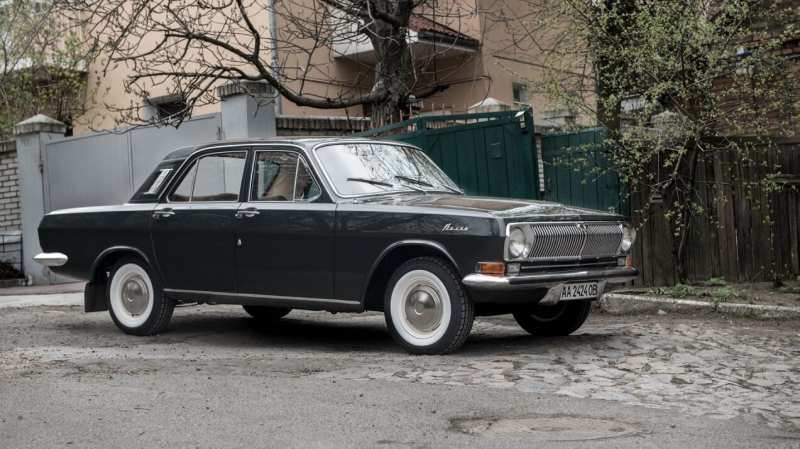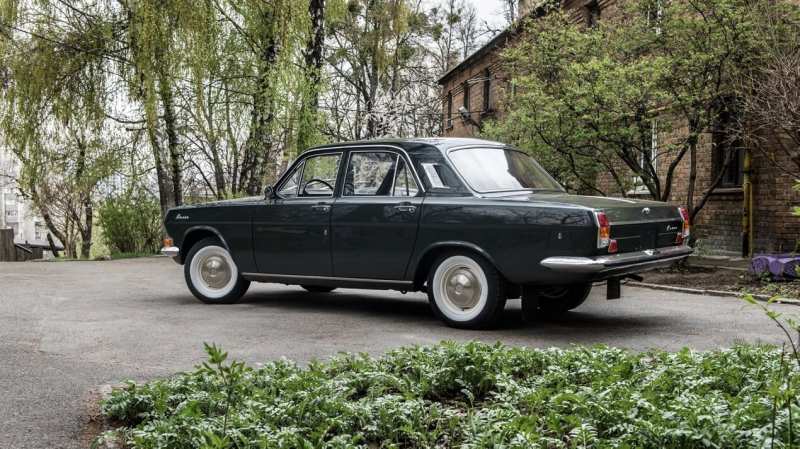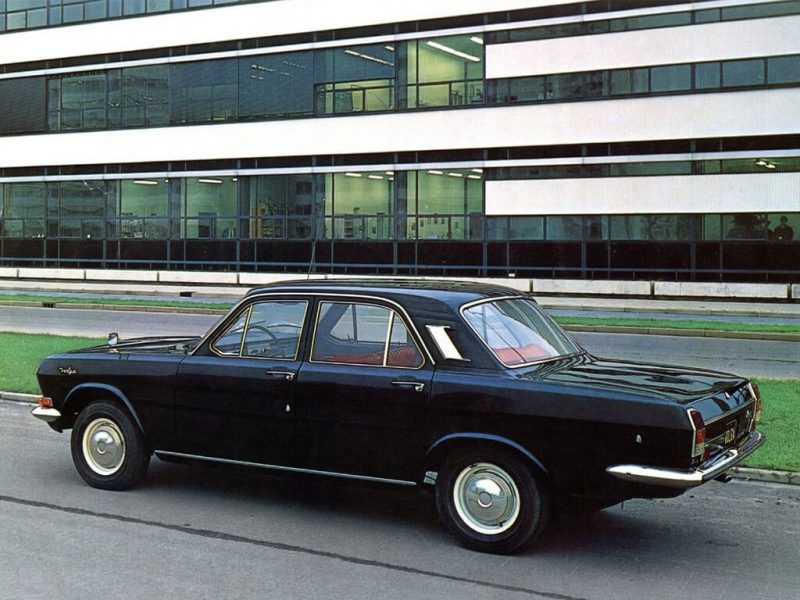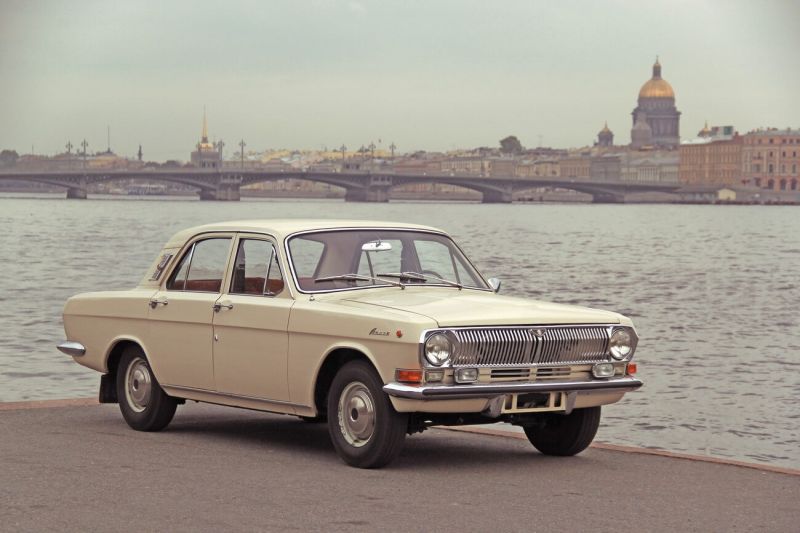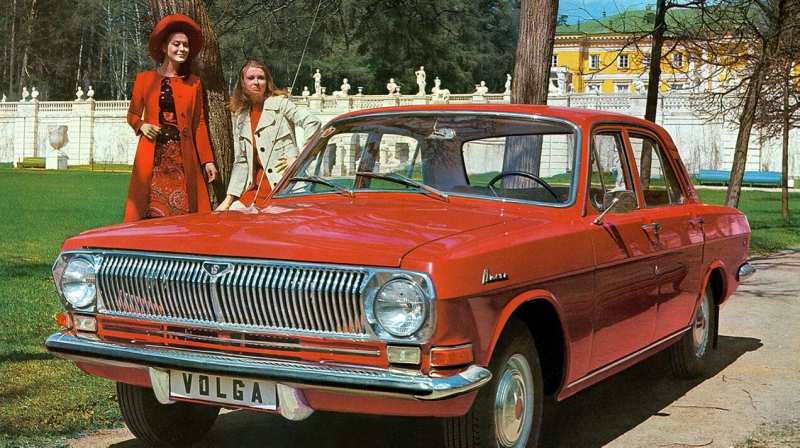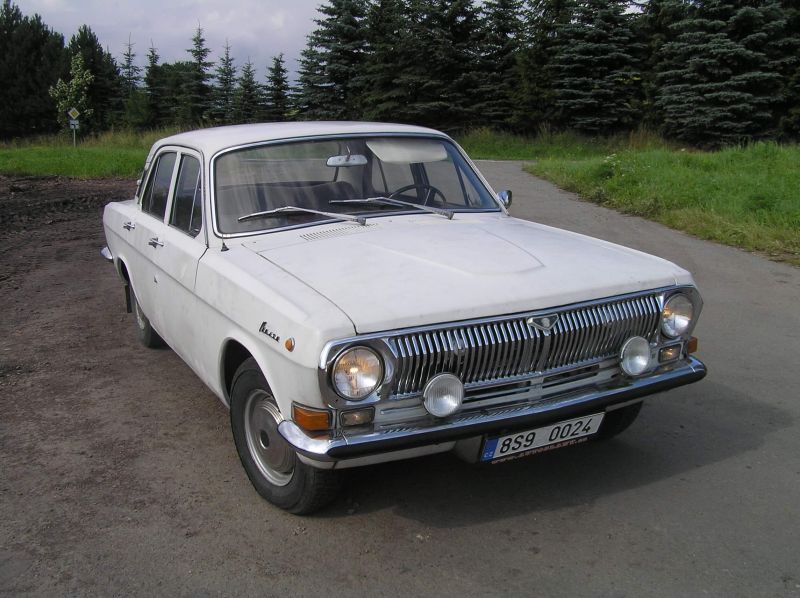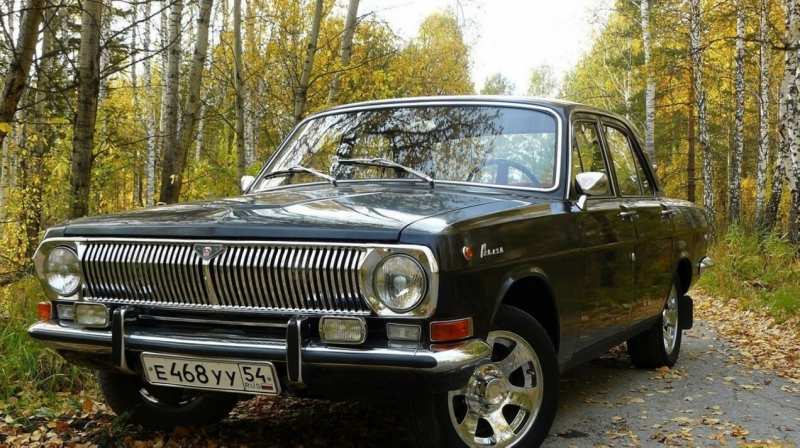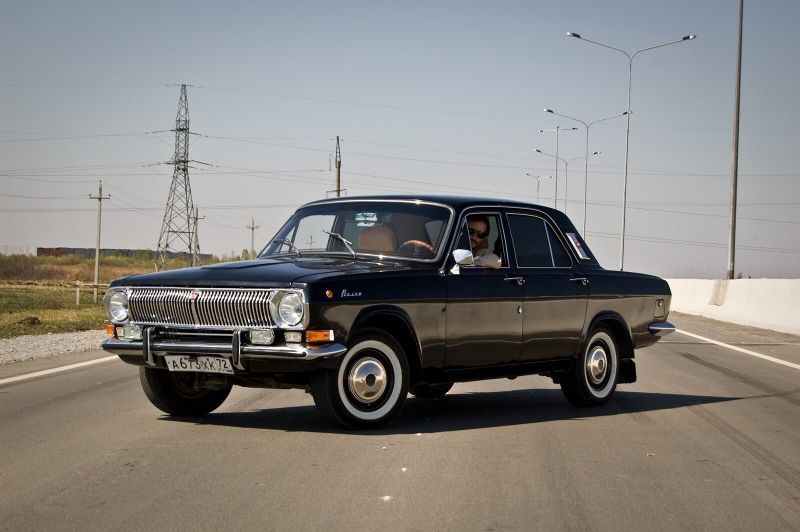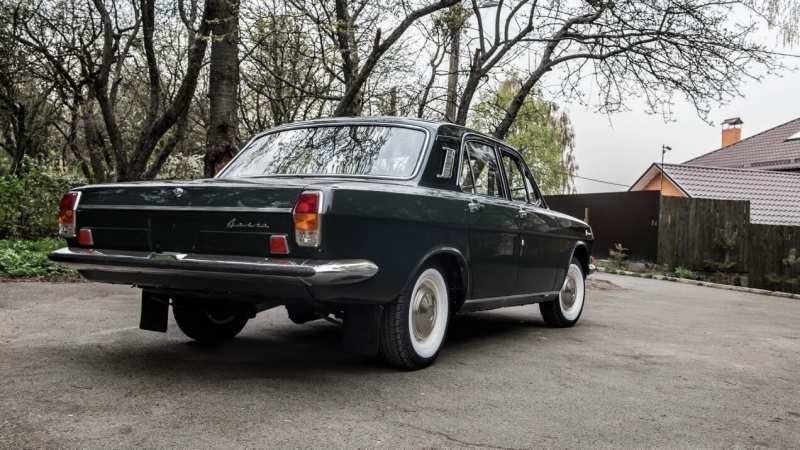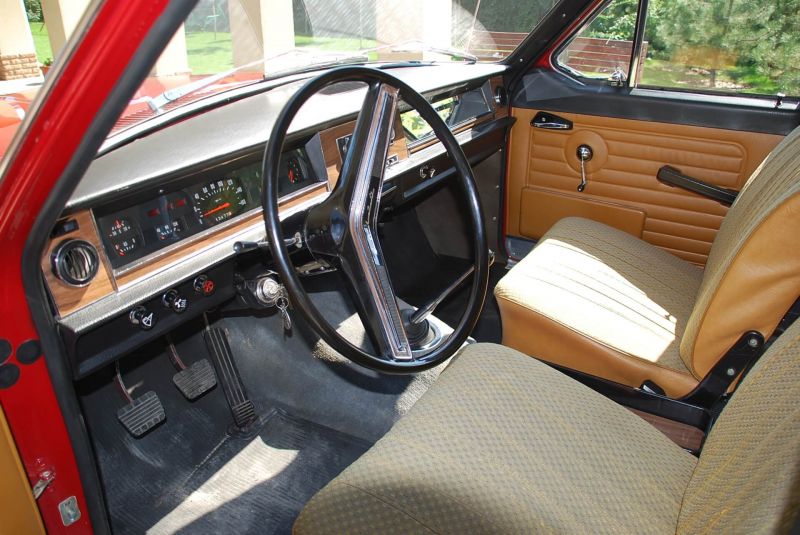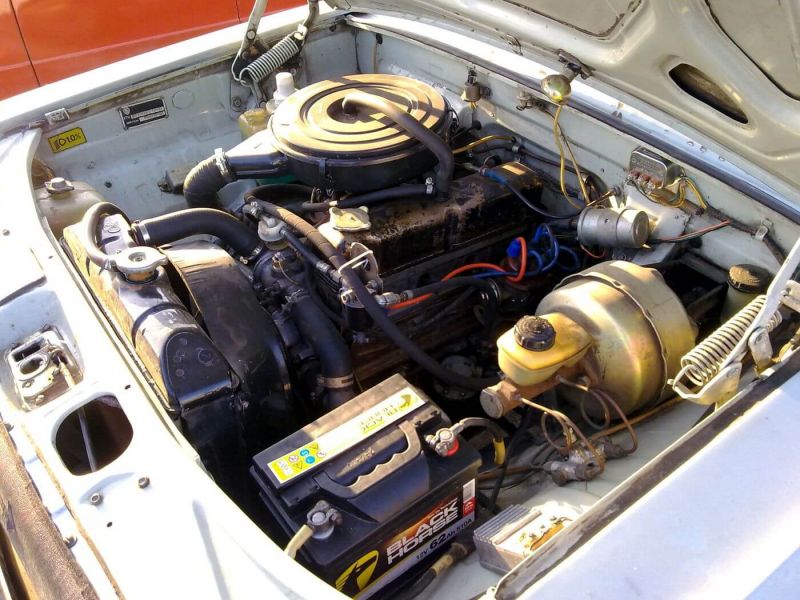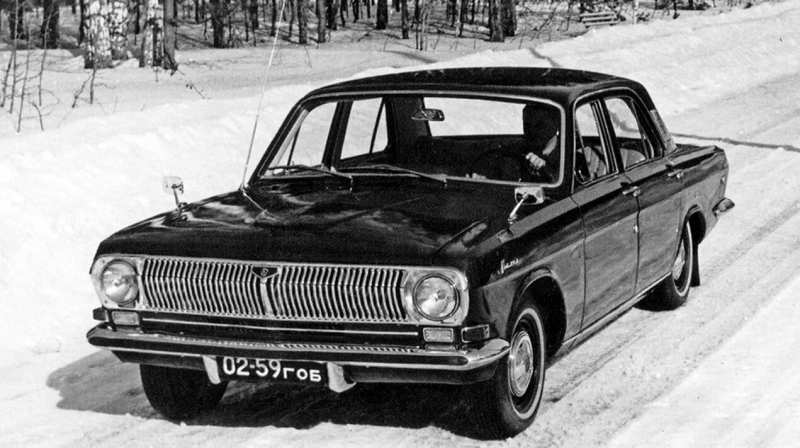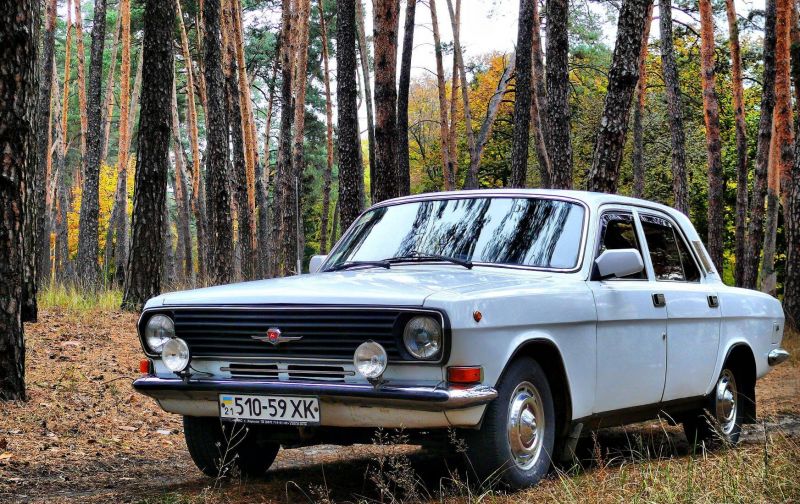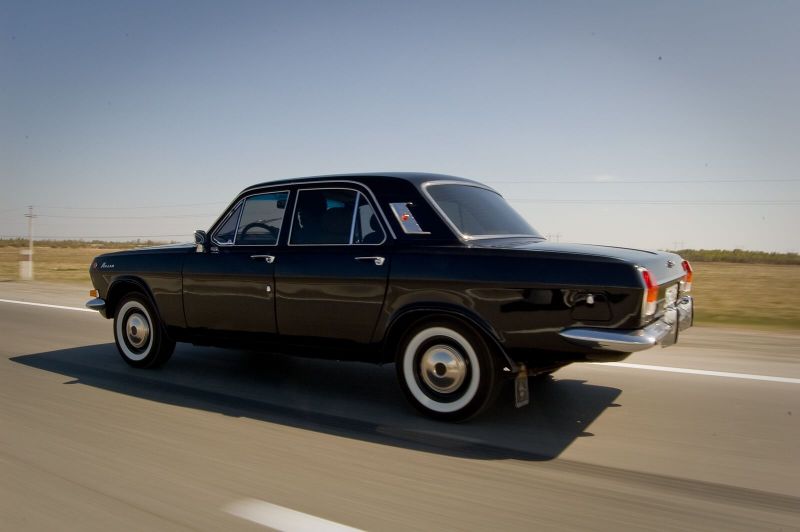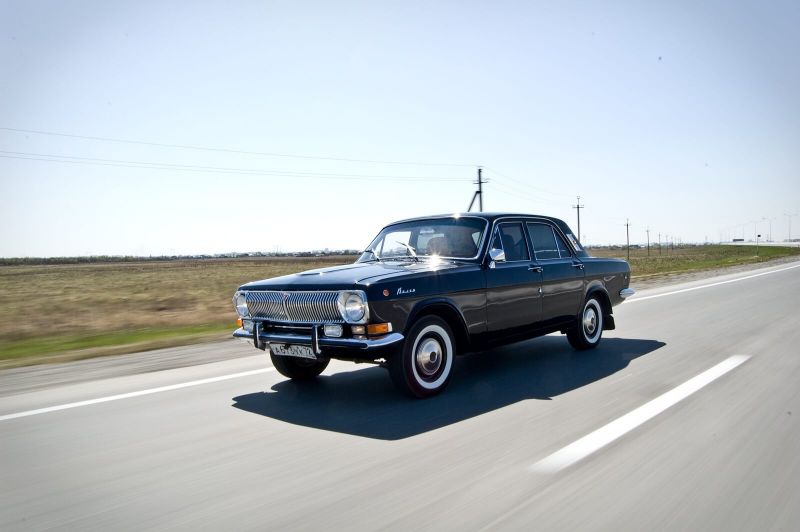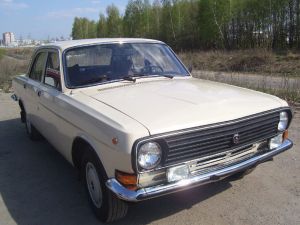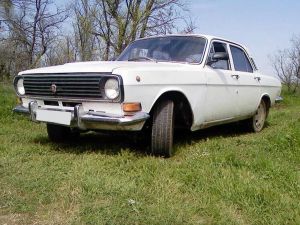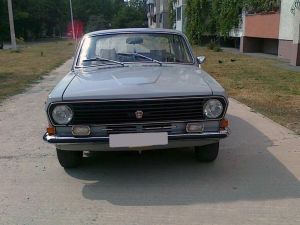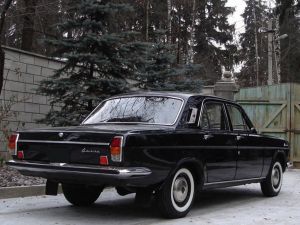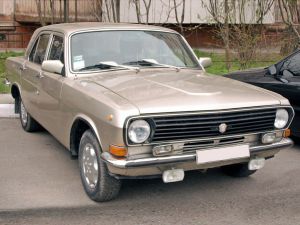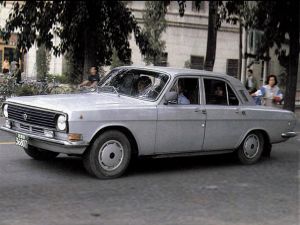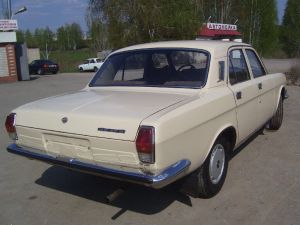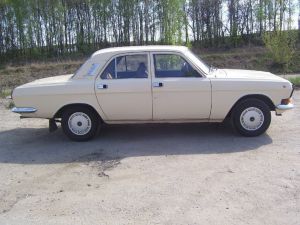Volga-24
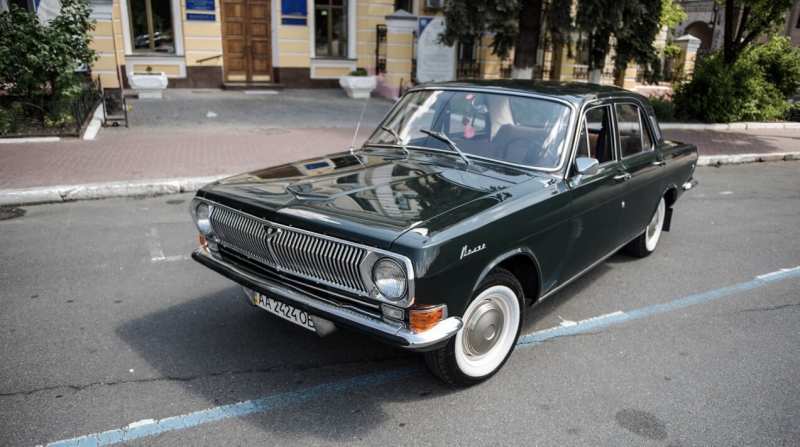
GAZ 24 is a Soviet middle class passenger car, which was manufactured in series at the enterprise in the city of Gorky in the period from 1969 to 1992. The Soviet passenger car was considered a symbol of the era of its years, and it was also a prestigious model, on which officials and representatives of government agencies moved. Most of the “ordinary people” only dreamed of such a model, as there were no competitors with such dimensions in the USSR. The whole model range is GAZ.
Car history
Before the 60s of the twentieth century began, the 21st model, which was mass-produced in the city of Gorky, had already been produced for some time and was quite outdated, especially if we talk about the design component. Initially the debut attempt to develop a car that could replace the 21st Wave was made by the designers in 1960. In those days, the design team was under the influence of models of American production, which were demonstrated at the Moscow exhibition in 1959.
On this basis, one should not be surprised because the project of the future 2nd family car, designed by a group of specialists, had the lines of the majority of foreign vehicles of those years. Although, a little “Volga” looked like a certain car, which was a Ford 1959 production. However, still, it cannot be called copying.
And now, two years later, in 1961, the design department headed by the general designer Alexander Nevzorov and designers Leonid Tsikolenko and Nikolay Kireev began to work on the design of the machine, which could replace the already familiar Volga-2121.
Serial production was planned to begin by the 50th anniversary of the Great October Revolution, which was celebrated in 1967, but due to the unfavorable economic situation the plans were violated. One of the reasons why the production of the 24th model was delayed was only the Volga Automobile Plant in Togliatti under construction.
But the state structures could not allocate so many subsidies to the employees of the enterprise anymore. In addition, the Gorky Automobile Plant was instructed to establish production and development of military vehicles, such as APC-60 and APC-70, due to the aggravation of the political situation in the world. In the period from 1962 to 1965, about 6 models of search models made of plasticine were built, which differed significantly from each other in appearance.
By the time of the onset of 1965, the appearance of the machine in general has already formed, it remains only to complete the development of aggregate parts. The debut sketches of the 24th model had fashionable fins, bent panoramic front and rear windows and two-color body painting. This was influenced by the American fashion, which was quite popular at the time, as well as the fact that some designers of the Gorky Automobile Plant were trained in the United States of America.
And it is impossible to say that this moment somehow had a negative impact on the automotive industry of the domestic car. During the tracking of all the world’s cars of those times, the specialists of the Gorky enterprise saw that the aerodynamic component of their cars seriously loses to the restrained styles they produced.
This led to the refusal from the younger sister “Chaika” – her design decision was not applied to the novelty. It is impossible to say that the car GAZ-24 began to be produced quickly. There were problems with the beginning of serial production, which depended not only on the Gorky Automobile Plant. It took more than one year, but the efforts were worth it.
Interestingly enough, initially, similar to the Japanese, the rear-view mirrors were placed on the hood, but in Japan this was done in order to detect cyclists in a timely manner. The Union of Soviet Socialist Republics simply copied this introduction.
Later, however, the mirrors were placed in their standard area – and the mirror had only a driver’s door. 1965 was the first year in which the strange “foreign cars” – prototypes of the 24th model, which had a Super nameplate – began to ride. They allowed to test various variations of engines and gearboxes.
This model has toured the entire USSR, along with the American cars. And it is impossible to say that the tests were insignificant, they were of national importance. The result of the tests showed that GAZ-24 is not inferior to foreign analogues.
Despite the reduction (by 10 mm) of the ground clearance, as compared to the previous GAZ-21, the car was not inferior in functionality to the bad road. A little later the car was checked in a taxi company, initially for what purpose it was created.
In 1966, the Soviet government allocated about 125,000,000 rubles for a large-scale reconstruction, which was a huge figure at the time. And why? Everything is very simple – if we compare GAZ-24 with GAZ-21, it has become much more technically complicated, which is why it was necessary to introduce new equipment.
It is worth recalling that the Zavolzhsky Engine Plant (ZMZ), which produced the power unit for the 24th model, was the first in the world to develop and apply high-performance technology for casting aluminum engine blocks under pressure.
The first experimental batch, for a full-fledged 1968, the conveyor was only 31 units with GAZ 24 marking. The middle of 1970 provided for complete cessation of construction of the last 21st Volga, that’s why the Gorky Passenger Car Company started working on the fresh model. Interestingly, the car even purchased imported equipment.
Exterior
Despite the long time of development, the appearance of the GAZ-24 sedan has not changed much, although the design staff sometimes slightly reworked the radiator grille, supplied the car with a pair or 4 headlights.
But it was decided to accept the body with a pair of headlamps and a frequent flywheel of the famous “whale mustache” in the vertical version. It is worth noting that such a solution has already been used in the previous family of vehicles of the Gorky Automobile Plant.
In addition, the 24th Volga with this appearance will exist until 1984, and in fact – until the completion of production. The front part of the car became much better and was immediately liked by many motorists. Here it was impossible to find those big and distinctive headlight elements, massive grille.
The last part became a little bit longer, and on its sides it was crowned with a couple of headlights. The bumper installed in front, in the “first series” of the 24th sedan did not receive fangs, but there were sides of the plate number plate made of chrome under the bumper.
The hood was long and almost even, except for a small patching in the middle. The windshield became more modern and improved the aerodynamic performance of the vehicle as a whole. Most, if not all, have fallen in love with GAZ-24 “Volga” and simply dreamed of buying it for themselves.
The side part demonstrated the longest sedan among all domestic cars produced at that time. Perhaps, this was the trump card of GAZ-24 before the same VAZ-2101. The front side part had an inscription over the Volga wheel, although it is difficult to imagine that there were people who could confuse it with, say, Zhigul.
The design staff couldn’t decide on the wheel hubcaps right away. Some experienced vehicles were supplied with wheel covers covering the entire wheel rim. The right side of the sedan had a refueling department, which opened with a key. The door handles were metallic and the door could be opened by pressing a button.
Initially, the side part was equipped with flashlights on the “scallops” of ventilation deflectors, but later model GAZ-24-10 did not have flashlights. The stern part of GAZ-24 also turned out to be radically new. The trucks of the “first series” received a rear bumper without fangs, but they had separate catapults from the rear lights, which could be found on the rear body panel.
It was difficult not to notice the huge size of the luggage compartment door, which opened with a key and swivel mechanism, which was installed around the slot of the lock itself. The latter solution seems to be very successful and unusual, which clearly distinguished the sedan from its other competitors, which, in fact, was not. The exhaust pipe was located on the traditional right bottom side.
Interior
After hitting the GAZ-24 salon of the Volga, it is immediately noticeable that the free space has become really more, despite the almost unchanged dimensions. However, interior decoration on the sedan was not distinguished by refinement, despite the last century of production. Seats turned out to be quite comfortable, which slightly smoothed the first sensations from visiting the salon.
The debut releases of the car received an armrest, which was installed between the front seats. A little later it was no longer used in the interior. Salon of GAZ-24-10 model was fully updated, which allowed to have comfortable headrests and full fabric upholstery. The dashboard does not stand out for its luxury. The front part was glued with a film under the wood. The glove compartment looked simple, there was no finishing. The bottom of the panel was made of iron type, and the steering wheel was large enough with a thin rim.
After 1985, the improvement was felt in these parts, where the rudder was reduced in diameter and its rim added in width. The dashboard has changed in principle, and now there were many more plastic parts. The interior upholstery was not very different. The upholstery was made of leather, and the colors were divided into brown, grey and red. A little later, the speedometer was replaced by a standard ribbon-type speedometer, which was more efficient and not so quickly failed.
Also, the car received finishing door panels with a horizontal pattern, there was a presence of static seat belts for those sitting in front and behind, and therefore, just removed the front armrest, new upholstery and other changes.
Specifications
Powertrain
During the design of the 24th model, first thought was given to the installation of three types of engines – six-cylinder, four-cylinder and V-type eight-cylinder. The six-cylinder model was immediately removed, and the 8-cylinder engines were most often used for special services and vehicles, which are located in government offices. The “Eight” was in most cases for special services, where a powerful engine and good dynamic characteristics were required.
On this basis, it is not difficult to guess that the basic engine was a 4-cylinder engine with an overhead valve arrangement. Its volume was 2,445 liters. The fuel consumption per 100 km was about 15 litres (according to passport 12).
The model with a 4-cylinder engine was in a pair of variations – 95 (Ai-93) and 85 (A-76) horsepower. All the differences between the power units were in the cylinder head. The engine, which was made for the 76th gasoline, was higher, which was reflected in the enlarged combustion chamber.
The four-cylinder engine was produced for GAZ-24 until 1985, when ZMZ 402/4021 was put on the trucks. New models of power units received a modified cylinder block and cylinder head. The modernization of its core almost did not touch, but only began to use the presence of an upgraded high-performance oil pump.
Transmission
The machines supplied with the eight-cylinder engine were synchronized with the automatic three-speed gearbox. However, it was rarely seen on the 24th Volga.
A four-speed manual gearbox with synchronizers was more common at all forward speeds. The clutch is represented by a dry single disc clutch. The clutch type is hydraulic.
Suspension
The front suspension had a pin type. It stood on the transverse levers and had cylindrical springs. And the rear was dependent with springs. Shock absorbers were of hydraulic telescopic type with two-sided action.
Steering control
The steering mechanism represented the presence of a globoid worm with a three-crested roller. There was an anti-theft device and a safety clutch.
Brake system
The working brake system included a drum mechanism on all hydraulically driven wheels with an amplifier, a separator and a failure detector for one of the circuits. The parking brake system included a mechanical drive on the rear wheels brakes.
External upgrades
The machine has been quite often subjected to some upgrades. For example, until 1975, the shape of the exterior mirrors was changed, the luggage compartment lock was fresher, more comfortable and secure, and the rear roof posts had parking lights that were lit up when people were disembarking.
The car has always been improved. Initially, we decided to remove the rear-view mirror from the right front wing. In turn, the left side was moved to the windscreen post. During 1976-1978, they made their debut thorough modernization of the Volga River.
This is what many people call the start of production of the second generation GAZ 24. These years allowed the car to get “fangs” on the bumper, where there were rubber inserts, there was also the presence of fog lights, which are located on the bumper, installed in front.
Tail lamps began to have built-in reflectors. The middle of the 80’s allowed specialists to subject the car to new improvements, which became more significant and radical. As a result, a GAZ-24-10 car, which is often called the 3rd family of the 24th Volga, was released. There were no flashlights on the ventilation system deflectors in the car, and the grille cladding was changed from chromium to ordinary black plastic. New plastic caps were installed on the wheels.
It is very important that the glasses installed at the rear have been replaced by electric heating instead of blowing with warm air. However, all changes were not made at the same time. Since 1986, there had already been the presence of recessed door handles, which were built into the body plane. The windows of the front doors were removed and simple bumpers without fangs appeared. The sidelights were removed, their option was to perform headlights.
Cost
Buying a new GAZ-24 won’t work anymore. But the secondary car market offers a worthy choice of equipment, the cost starts from about $2272. The more expensive the price is, the younger the sedan is and the more qualitative it is. If the car was able to survive well, it is logical to expect that the owner will ask for more for it.
The pros and cons
Pluses cars
- A quality Volga bodywork;
- Low price policy and ease of interchangeability of spare parts and parts;
- Pleasant and stylish appearance (for those years);
- Improved aerodynamic component, compared to previous models (GAZ-21);
- Good power units;
- Small height of road clearance;
- Good volume of luggage compartment;
- Comfortable seats with armrests;
- Good dynamic characteristics;
- A soft suspension bracket which allows to swallow the majority of bumps and pits;
- The set of updatings;
- Is not afraid of loadings;
- Small radius of turn of the car, despite the big dimensions;
- Clear dashboard;
- The car is unpretentious to fuel;
- There are seat belts;
- Large volume of luggage compartment;
- The height of the body became lower;
- The quality of handbrake design has been improved;
- The beam of the front suspension became more durable and reliable;
- Improved the quality of paintwork and body parts;
- Good visibility inside the vehicle;
- The interior became lighter.
Cons of a car
- Big weight sedan;
- The automatic gearbox did not take hold;
- No hydraulic power steering;
- The steering column had no adjustments;
- Minimum front seat settings;
- High fuel consumption;
- Large dimensions of the Volga River;
- Uncomfortable trunk;
- Low landing may be inconvenient;
- Due to the long hood, the front visibility is noticeably affected, you need to get used to the size of the machine.
We sum up
Even if not for a long time, the designers of the Gorky Automobile Plant managed to make a car that would have been desired by millions of people. And the demand for the sedan was even for the very first model, which did not have those improvements, which appeared much later. After GAZ-21, the 24th Volga looked more stylish and presentable. Its features became more concise. The designers worked hard to create a memorable silhouette.
The front part of GAZ-24 no longer had such a bit clumsy headlights, as in the previous, 21st model. Inside the car it became much better, the steering wheel later became smaller, and the thickness of the rim, on the contrary, increased. There was even more free space in the cabin. The seats became more comfortable, headrests and seat belts appeared, which made the Volga the undisputed leader, at least in the USSR.
The engines were slightly modified, adding a 4-speed manual gearbox, which became even better. The luggage compartment got a lot of free space, but it was not completely rationally distributed, there was no room for a spare wheel, etc. The engine was still eating a lot, the flow rate was 15 liters per hundred liters, the suspension was not as good as we would like it to be, but the car was so soft as if it was floating.
Of course, you can find many drawbacks in GAZ-24, but do not forget when this model was released. And most importantly, it can still be found quite often on the road. This indicates that the Volga is still on the move and serves as faith and truth to its owners, who are watching the car.
We advise you to read the article: Dream car: how Volga was hardened
GAZ – history of car production


